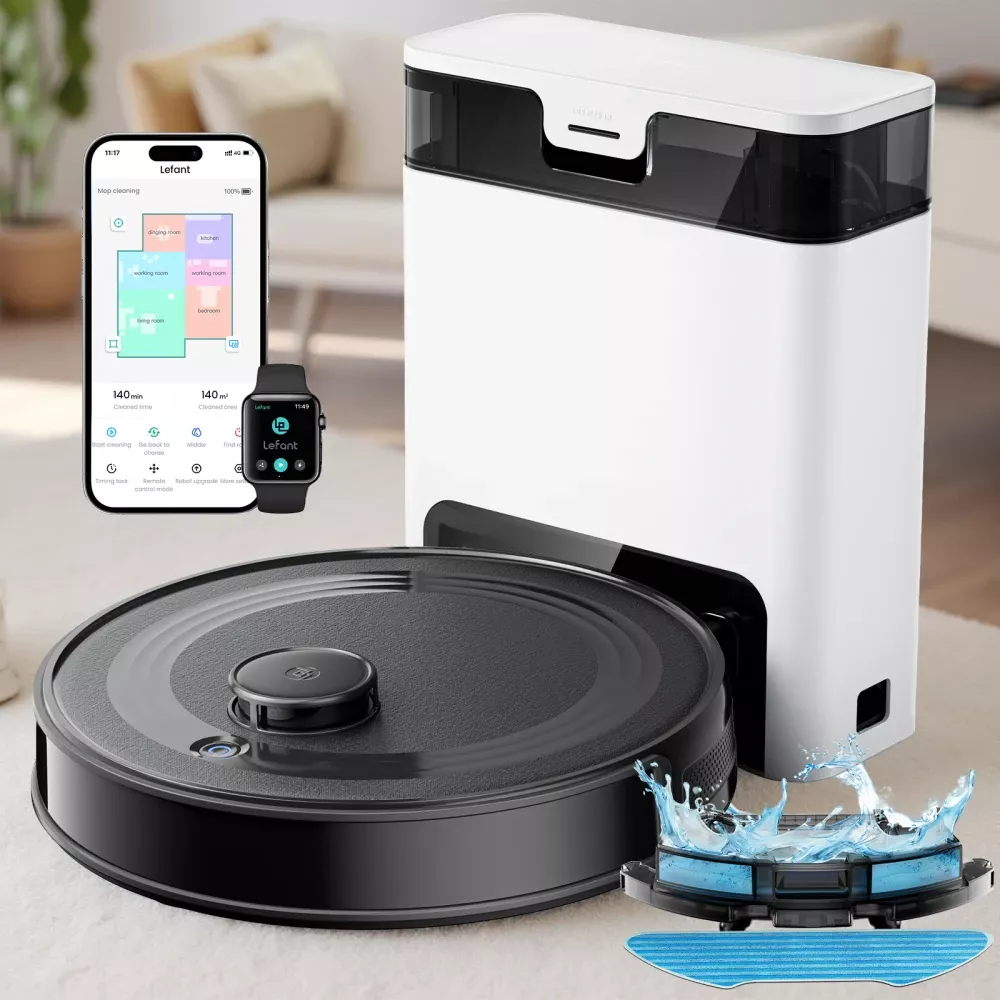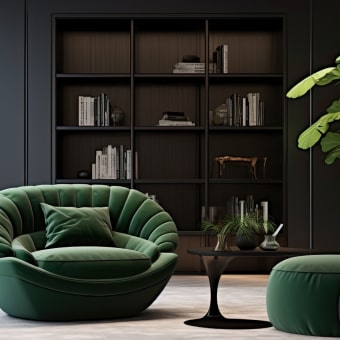A Friendly Guide to the Quietest Robot Vacuum Cleaner

Imagine a tiny round helper that hums like a contented cat while it sweeps your floor — barely noticeable, politely efficient, and somehow always at the right place at the right time. That’s the dream of anyone who wants automation without the roar. Welcome to the world of quiet robot vacuums: machines designed to clean and keep your living room conversation intact.
Why “quiet” matters (more than you think)
Noise affects mood, focus, naps, pets, and even baby sleep cycles. A noisy vacuum that wakes housemates defeats the point of convenience. Quiet robot vacuums let you run cleaning cycles during work-from-home hours, when guests are visiting, or late at night—without the soundtrack of a jet engine. Practical tip: look for models that list decibel (dB) ratings and offer “quiet / eco” modes for lower volume operation. (Narwal Robotics, Eufy)
What the decibel numbers mean — plain and useful
Decibels measure perceived loudness on a logarithmic scale. For context:
- Normal conversation ≈ 60 dB
- A quiet library ≈ 40 dB
- Many robot vacuums run between ~50–75 dB depending on mode.
A robot that runs ~50–55 dB will often blend into background noise; above ~65 dB you’ll usually notice it. Manufacturers and reviewers measure this differently, so use published test numbers (and independent lab tests) as a guide — not gospel. (GearLab, Consumer Reports)
The quietest picks (what independent testers and brands say)
Below are models and families commonly called out for low noise in tests and manufacturer specs. I’m noting the claim/test and why they stand out.
- Eufy 11s / 11s Max (and similar Eufy quiet lineup)
- Popular for very low measured sound levels in independent tests (one round of tests showed Eufy models producing noise in the low-50 dB range). These units trade some high suction for a whisper-quiet profile and good everyday cleaning on hard floors. Great for apartments and light daily maintenance. (GearLab, Eufy)
- Roborock quieter models (e.g., Q-series and some S-series in low-power modes)
- Roborock highlights quieter operating modes in some models and independent reviews often call newer Q/Pro models quietly efficient—good balance of suction, mapping, and reasonable noise when put into “quiet” or “balanced” modes. If you want both smarts and calm, some Roborock models are worth comparing. (Roborock Official Australia)
- ECOVACS / DEEBOT models (quiet cleaning / eco modes)
- ECOVACS lists quieter decibel figures for several newer models, especially when using lower suction or “eco” settings. Some hybrids (vac+ mop) are optimized to be less intrusive during mopping cycles. (ECOVACS US, Modern Castle)
- Other budget quiet contenders (Lefant, Shark budget lines, select Dreame/Ecovacs presets)
- Lower-cost or smaller-form models often run quieter because they have smaller motors and less aggressive suction. Handy if you live in a small flat and mainly want daily floor maintenance rather than heavy deep-cleaning. Independent testing shows a spread—but several affordable models test under ~55 dB in quiet modes. (GearLab, Modern Castle)
Bottom line: the quietest machines are often either smaller/less powerful units or premium models that offer a true low-power / “quiet” mode. If you need heavy-duty suction (e.g., deep rugs, pet fur), expect some tradeoff between maximum suction and absolute silence. (Consumer Reports)
How to choose the quietest robot vacuum for your home — short checklist
- Check measured dB in independent reviews (not just the marketing page). Aim for <60 dB for genuinely quiet daytime use; ~50–55 dB if you want background-level operation. (GearLab, Consumer Reports)
- Look for quiet/eco modes—these let you run the cleaner without max suction and with much lower noise. (ECOVACS US)
- Decide what’s more important: near-silence or heavy suction. If you have low-pile floors, a quiet model will do nicely; for thick rugs or lots of pet hair, a stronger (and usually louder) robot may be required. (Modern Castle)
- Consider scheduling: run louder deep-cleans when the house is empty or at times when noise won’t bother anyone.
- Read multiple sources (lab tests, consumer reviews, Reddit owner comments) — manufacturers’ dB numbers sometimes use ideal, not-real-world conditions. (Reddit, GearLab)
Tips to make any robot vacuum quieter (practical magic)
- Empty the bin and clean brushes regularly. A clogged motor works harder and sounds louder.
- Place the dock on a soft mat to damp vibration/rumble.
- Run on “quiet” or “eco” mode for routine cleaning; reserve high-power for spot jobs.
- Keep floor clutter off the route—collisions and repeated corrections make more noise.
- If you’re very noise-sensitive, run the machine while you’re out or during daylight hours when background noise masks it best.
Maintenance notes that keep noise down
Fans and bearings wear over time. Replace filters and rollers per manufacturer guidance, keep sensors and brushes clean, and check for trapped hair around wheels. Regular maintenance keeps the motor from straining and keeps the unit whisper-friendly for longer.
Quick buying scenarios (short story-style decision):
- Apartment, WFH, light debris → Pick a quiet mid-range robot with tested ~50–60 dB and “quiet” mode (e.g., compact Eufy variants or a Roborock in eco). (GearLab, Roborock Official Australia)
- Pet-heavy household with thick rugs → Prioritize suction and self-emptying docks; accept a bit more noise or run deep cleans when away. (Modern Castle)
- Tight budget, need whisper operation → Look at lower-suction compact models and clear independent dB tests—some budget picks test surprisingly quiet. (GearLab)
Final thought — a tiny bedtime tale
Think of the quiet robot vacuum as a courteous tiny houseguest: it arrives with a soft hum, tidies while you sip coffee, and slips back to its dock like a cat curling into a warm hamper. Not all machines are created equal, though—some purr, some roar. With the right make and mode, you can have floors that sparkle and ears that stay blissfully undisturbed. (Eufy, Consumer Reports)
3 Quick Q&A (short & useful)
Q1 — What decibel number should I look for if I want a truly quiet robot?
A1 — Target models that test around 50–60 dB in real-world independent tests for genuinely unobtrusive operation; <55 dB is excellent if you want near-background noise levels. Always check independent lab/review measurements, not just the marketing blurb. (GearLab, Consumer Reports)
Q2 — Do quiet robot vacuums clean worse than louder ones?
A2 — Not necessarily. Many quiet models are optimized for daily maintenance on hard floors and light debris. However, maximum suction often equals more noise, so for deep cleaning thick carpet or heavy pet hair you may need a louder (higher-suction) option or supplemental cleaning. (Modern Castle)
Q3 — How can I reduce the noise of the robot I already own?
A3 — Keep brushes and filters clean, use eco/quiet mode for routine runs, place the dock on a vibration-dampening mat, and schedule deep-cleaning when you’re out. Regular maintenance prevents the motor from straining and reduces noise over time.


















Leave a comment